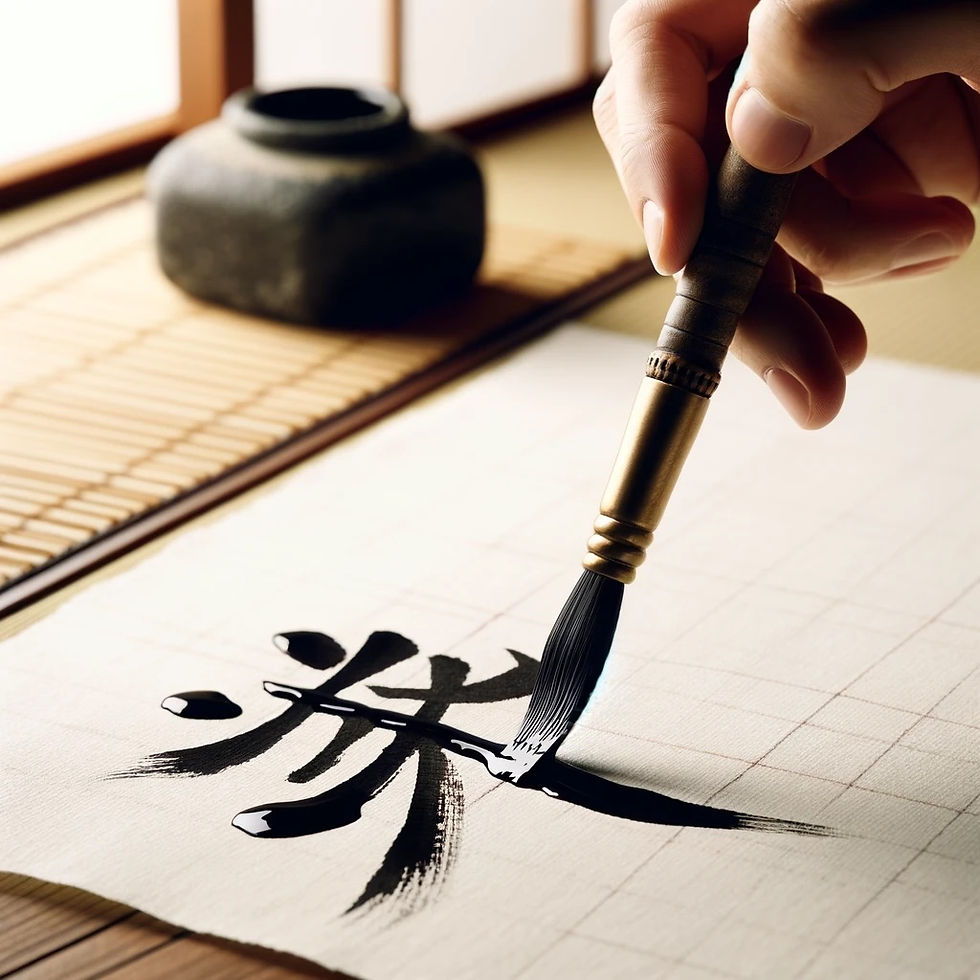Understanding Japanese Social Interactions: The Role of Aimaina
- Marco

- Jun 17, 2024
- 4 min read
Updated: Aug 28, 2024
In the heart of Japanese culture lies a concept that often baffles newcomers and enchants those who delve deeper: aimaina, or ambiguity. In a country where harmony and subtlety are highly valued, aimaina plays a crucial role in communication, relationships, and daily life. Understanding this cultural nuance can transform your experience in Japan, offering a richer, more nuanced appreciation of its society.

What is Aimaina?
Aimaina (曖昧な) can be translated as "vague" or "ambiguous," but it encompasses much more than just unclear or indefinite statements. It represents a cultural preference for subtlety, context, and the unsaid. In Japanese culture, being direct can often be perceived as rude or confrontational. Instead, ambiguity allows for flexibility, preserving harmony (*wa*, 和) and showing respect for others' feelings and opinions.
Aimaina in Daily Life
One of the first places you'll encounter *aimaina* is in the language itself. Japanese is rich with expressions that allow for softening statements, providing a way to navigate social interactions delicately. For instance, instead of saying "no" outright, a Japanese person might say "chotto..." (ちょっと…), which literally means "a little," but contextually conveys hesitation or refusal. Similarly, phrases like "sore wa chotto..." (それはちょっと…) or "muzukashii desu ne" (難しいですね, "it's difficult") are often polite ways to decline an invitation or suggestion.
In many cases, these phrases are not meant to deceive or confuse but to maintain the social fabric. Direct refusals might cause embarrassment or discomfort, which is something Japanese culture strives to avoid. This use of aimaina allows conversations to flow smoothly without causing unnecessary friction, reflecting the deep-seated cultural value of keeping interactions as harmonious as possible.
Japanese Aimaina in Business and Social Interactions
In business and formal settings, aimaina becomes even more pronounced. Japanese people often avoid saying "no" directly to prevent embarrassing or offending someone. Instead, they might use phrases like "kento shimasu" (検討します, "I will consider it") or "maemuki ni kangaemasu" (前向きに考えます, "I will think positively about it"). While these phrases sound promising, they can sometimes be a polite way to express doubt or refusal without closing the door entirely. This keeps the conversation open and maintains the possibility of future collaboration or discussion.
In social settings, aimaina helps maintain group harmony. When making decisions, a Japanese person might not state their preference outright. Instead, they might say "dou deshou ka?" (どうでしょうか, "what do you think?") to gauge the group's opinion before revealing their own. This approach ensures that everyone's feelings are considered, and no one is singled out or put on the spot. The emphasis is on group consensus, where the decision reflects the collective rather than any one individual.
The Beauty of Aimaina
While aimaina might seem perplexing or frustrating to those accustomed to direct communication, it offers a unique beauty. It encourages listening, empathy, and an appreciation for context and non-verbal cues. In a society where the group often takes precedence over the individual, aimaina helps maintain balance and mutual respect. The practice of aimaina can lead to deeper, more meaningful connections, as it requires participants to tune in to the subtleties of conversation and emotion.
In art and literature, aimaina is celebrated as a sophisticated form of expression. The Japanese art of haiku, for example, often leaves much unsaid, inviting the reader to infer meaning from what is not explicitly stated. This love for subtlety extends to other aspects of Japanese culture, from the understated elegance of a traditional tea ceremony to the simple, yet profound, design of a Zen garden. In these spaces, ambiguity is not a lack of clarity but an invitation to explore deeper layers of meaning.
Embracing Aimaina in Your Journey
For those living in or visiting Japan, embracing *aimaina* can enhance your interactions and deepen your understanding of Japanese culture. It requires patience and attentiveness but offers a rewarding glimpse into the subtle art of Japanese communication. As you navigate Japanese social interactions, *aimaina* will become an integral part of your experience. Notice how people phrase their responses, the pauses, and the non-verbal cues that accompany conversations. By doing so, you'll not only improve your communication skills but also gain a deeper appreciation for the intricate dance of Japanese social interactions.
Aimaina: More Than Just a Linguistic Quirk
In the end, aimaina is more than just a linguistic quirk—it's a reflection of Japan's rich cultural tapestry, where every word and gesture is imbued with layers of meaning. Embrace the ambiguity, and you'll find a world of understanding unfolding before you. As you continue to explore Japan, you'll see that *aimaina* is everywhere—from the way people interact in public to the way art and literature are crafted.
Conclusion
Aimaina is a unique aspect of Japanese culture that highlights the importance of subtlety, context, and the unsaid in communication. It’s a beautiful reminder that not everything needs to be spelled out to be understood. By embracing aimaina, you can gain a deeper insight into the Japanese way of life and learn to appreciate the delicate balance of harmony and respect that defines so much of Japan’s social fabric.
Thank you for reading!
Marco

















Comments